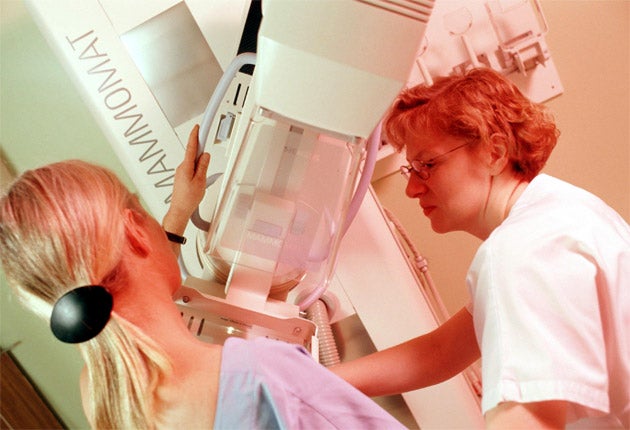Breast cancer 'wonder drug' could trigger second tumour

Your support helps us to tell the story
From reproductive rights to climate change to Big Tech, The Independent is on the ground when the story is developing. Whether it's investigating the financials of Elon Musk's pro-Trump PAC or producing our latest documentary, 'The A Word', which shines a light on the American women fighting for reproductive rights, we know how important it is to parse out the facts from the messaging.
At such a critical moment in US history, we need reporters on the ground. Your donation allows us to keep sending journalists to speak to both sides of the story.
The Independent is trusted by Americans across the entire political spectrum. And unlike many other quality news outlets, we choose not to lock Americans out of our reporting and analysis with paywalls. We believe quality journalism should be available to everyone, paid for by those who can afford it.
Your support makes all the difference.A drug widely used to treat breast cancer has been found to increase four-fold the risk of developing a second tumour in the opposite breast, scientists have said.
Tamoxifen, which cancer patients have taken for more than 30 years,is known to decrease the risk of the most common form of breast cancer. But a study published in the journal Cancer Research suggests it may also increase the risk of a more aggressive form of the disease.
The drug works by blocking the action of the hormone oestrogen, which can stimulate a form of tumour known as oestrogen-receptor positive cancer. However, the new study suggests that the drug is associated with breast tumours that are not triggered by oestrogen, called oestrogen-negative breast cancer, which are harder to treat.
Scientists emphasised yesterday that the findings are still preliminary, and that the benefits of taking tamoxifen still outweigh any increased risks of developing either second cancers or other side-effects such as blood clots, stroke and cancer of the uterus.
The study assessed the history of tamoxifen use among 1,103 breast cancer survivors who were initially diagnosed with oestrogen-positive breast cancer between the ages of 40 and 79, and were given the drug as a treatment. Of these, 369 went on to develop a second breast cancer.
The researchers worked out from telephone interviews and hospital medical records the long-term tamoxifen therapy for each patient, and built up a picture that compared patients who had experienced different exposure to the drug. Although the study found a strong association between long-term tamoxifen use and an increased risk of oestrogen-receptor negative tumours, it did not suggest that patients should stop taking the drug.
"It is clear that oestrogen-blocking drugs like tamoxifen have important clinical benefits and have led to major improvements in breast cancer survival rates," said Christopher Li of the Fred Hutchinson Cancer Research Centre in Seattle, who led the study team.
"However, these therapies have risks, and an increased risk of oestrogen-receptor negative second cancer may be one of them. Still, the benefits of this therapy are well established and doctors should continue to recommend hormonal therapy for breast cancer patients who can benefit from it," he added.
Join our commenting forum
Join thought-provoking conversations, follow other Independent readers and see their replies
0Comments